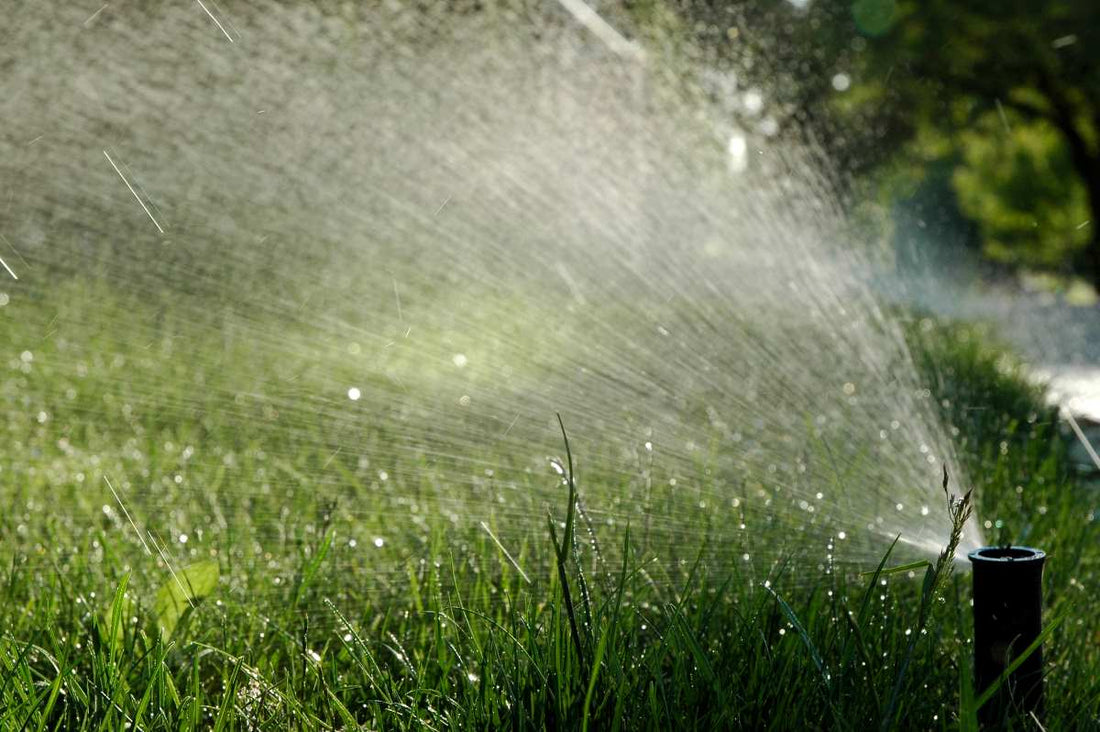
Can You Lay Sod During Water Restrictions in Florida?
Jamie TedderIn the vibrant and diverse landscapes of Florida, a lush, green lawn is more than simply a visual delight—it’s a refreshing escape from the heat and a symbol of a well-maintained property. The strategic installation of sod provides an almost instant transformation, turning bare or patchy yards into thriving, verdant spaces. Beyond elevating curb appeal, a new sod installation offers a host of benefits: improved property value, reduced soil erosion, better cooling, and a more inviting outdoor space.
However, these advantages come with a set of challenges, particularly in terms of water usage. Water restrictions are a frequent reality in Florida, and navigating these limitations while laying new sod can be complex. Homeowners and businesses must balance the urgent need for fast establishment with the imperative of water conservation.
This article explores the intersection of sod installation and water restrictions in Florida, offering actionable tips and insights to help you achieve a beautiful, sustainable lawn under any conditions.
Navigating Water Restrictions for New Sod Installation in Florida
Water management policies are designed to make every drop count. Usually implemented as temporary measures during water shortages, these regulations are imposed by local authorities to conserve water. However, in many areas of Florida, such local ordinances are enforced year-round.
For example, the South Florida Water Management District (SFWMD) maintains landscape water restrictions throughout the year. These measures limit using sprinkler systems and other irrigation methods to specific times and days—before 10 am or after 4 pm—to preserve water resources. This is particularly important during extended dry spells.
-
Even-numbered addresses: Permitted to water on Thursday and/or Sunday.
-
Odd-numbered addresses: Allowed to water on Wednesday and/or Saturday.
-
Properties without a discernible address: May follow alternative schedules, such as Tuesday and/or Friday.
Establishment Period for New Sod
For new sod installations, understanding these SFWMD restrictions is critical. New lawns and plants benefit from the so-called 30-30 establishment period, which includes the following guidelines:
Installation Day: Watering new sod is allowed any day, at any time, to help the grass settle into its new environment.
First 30-Day Post Installation: You can water your new lawn any day during the allowable hours, which are before 10 am or after 4 pm.
Second 30-Day Period: Watering becomes more regulated and is allowed three days per week, with schedules also determined by address number.
These SFWMD guidelines ensure that your new sod receives the necessary hydration to establish itself while also promoting water conservation in the region.
Residential and non-residential locations must adhere strictly to these guidelines. Typically, a healthy Florida landscape requires about 1 to 1.5 inches of water per week during the growing season and even less during winter, when lawns may grow more slowly or enter dormancy as temperatures drop. This careful balance ensures your lawn receives the optimal hydration it needs to thrive while conserving precious water resources. While these restrictions apply to most water sources, certain exceptions exist. These include using reclaimed water, irrigation of athletic play areas, and agricultural operations with proper permits. Hand watering with a hose fitted with a self-canceling nozzle is also permitted at any time.
Planning for Long-Term Sod Health
Understanding and adhering to these water restrictions is essential for the long-term health and sustainability of your newly installed sod. With this information, you can plan your watering schedule accordingly, helping your lawn establish quickly without risking penalties or compromising conservation efforts.

Laying Sod Under Water Restrictions: 5 Tips for Florida Homeowners
Watering your new sod during water restrictions requires a strategic, informed approach. With a balance of timing, technique, and attention to detail, you can help your lawn establish itself effectively within the limitations imposed by local water management authorities.
Initial Watering for New Sod
During the first two weeks after installation, new sod requires frequent, light watering to stay consistently moist. Because the roots are still shallow, watering 2-4 times a day will help prevent the sod from drying out. However, make sure to avoid overwatering to reduce water waste.
After the first two weeks, gradually reduce the watering frequency until you reach the recommended 1 to 1.5 inches per week. Transitioning to deeper, less frequent watering sessions after the establishment stage will encourage stronger root growth and long-term resilience.
Choosing the Best Time to Water
The timing of your watering sessions plays a critical role in water conservation. Watering early in the morning or late in the evening helps reduce evaporation, allowing more moisture to reach the root zone. Midday watering leads to excessive water loss and can stress the new sod. Sticking to cooler hours maximizes the efficiency of each watering session while keeping your lawn adequately hydrated.
Using Smart Watering Systems for Efficiency
Investing in smart irrigation technology can help you manage water use more effectively. Rain gauges, soil moisture sensors, and smart irrigation controllers adjust watering schedules based on actual weather conditions, preventing unnecessary watering. If recent rainfall has already provided sufficient moisture, these systems can delay irrigation, keeping you compliant with local water restrictions while ensuring your sod receives the hydration it needs. Monitoring natural precipitation and adjusting your irrigation accordingly prevents water waste and promotes healthy establishment.
Mow High to Conserve Moisture
Maintaining a higher mowing height—around 3 inches—is another simple yet effective strategy. (can you say at the highest recommended height) Taller grass provides shade to the soil, reducing evaporation and helping to retain moisture. This natural shade acts as an insulating layer, keeping the soil cooler and more hydrated. By mowing high, you also promote stronger root growth and reduce the risk of stress during periods of restricted watering (can you move this further down the list of tips, as you can't mow until the new sod is established.
Fixing Leaks and Maintaining Your Irrigation System
Regular maintenance of your irrigation system ensures that water is being distributed efficiently. Leaks, broken sprinkler heads, or clogged nozzles can lead to water waste, reducing the amount of moisture reaching your sod. Conduct routine inspections to identify and repair any issues promptly to prevent unnecessary water loss. Keeping your system in good working order helps you stay within water restrictions while providing consistent and adequate hydration to your lawn.
Mowing at the Right Time and Height
Mowing too soon can disrupt the establishment process, so it’s important to wait until the sod has firmly rooted before cutting it for the first time. Depending on the grass type and growing conditions, this typically takes a few weeks. Once the sod is established, maintaining it at the highest recommended mowing height—usually around three inches—helps conserve moisture by shading the soil. Taller grass reduces evaporation, promotes deeper root growth, and increases the lawn’s ability to withstand dry conditions. Avoid scalping the lawn, as cutting too low can stress the grass and make it more vulnerable to drought.
Additional Water Conservation Tips
Following the strategies above can help you successfully establish new sod while adhering to local water restrictions. Proper watering, smart scheduling, and system maintenance will help your lawn thrive despite limitations, allowing you to create a healthy, resilient landscape while conserving water. Consider these additional tips for further improving your water efficiency in lawn care.
-
Hand Watering Specific Areas: Consider hand watering areas that tend to dry out faster. This allows you to apply water precisely where needed, facilitating even distribution and preventing overwatering in areas that might already be sufficiently moist.
-
Opt for Drought-Tolerant Grass Varieties: When buying sod, consider drought-tolerant grass varieties that are better adapted to Florida’s climate and water restrictions. Warm-season varieties like bermudagrass, specifically improved varieties like Bimini Bermuda, can handle water limitations better, establish quickly, and are more resistant to high temperatures and traffic.
-
Explore Alternative Water Sources: If available in your area, look into alternative water sources such as rainwater barrels or reclaimed water systems. These systems can supplement your irrigation needs and provide an eco-friendly alternative to potable water.
-
Educate Yourself on Local Regulations: Stay informed about the latest water restrictions and updates from your local water management district. Understanding the rules not only helps you avoid fines but also allows you to plan your sod installation and maintenance more effectively.

The Role of Bethel Farms in Achieving a Resilient Lawn
Choosing the right sod variety is a critical factor in establishing a durable, healthy lawn. Bethel Farms is one of the trusted sod farms in Florida, providing high-quality sod that is specially adapted to local climates and challenges. Our wide range of sod grass for sale is cultivated and harvested carefully to help you establish a lawn that can withstand the rigors of drought and high traffic.
Our commitment to sustainable farming practices means our sod meets industry standards for quality and resilience. Our products are tested and proven to perform well under Florida's water restrictions. From expert advice on watering schedules to recommendations on sod varieties, our lawn care experts are dedicated to helping you achieve the best possible results. We aim to ensure your sod is well-equipped to thrive even in the face of water conservation challenges.
Final Thoughts
Laying sod during water restrictions in Florida may seem challenging, but with the right strategies and a clear understanding of local regulations, it’s entirely achievable. A lush, green lawn boosts your property’s value, improves outdoor living spaces, and contributes to a sustainable environment. By adopting these practices, you can ensure that your new sod establishes quickly and thrives even under watering constraints.
Additionally, choosing drought-tolerant sod varieties and partnering with reputable suppliers like Bethel Farms allows you to create a resilient lawn that fulfills both aesthetic and practical needs.
Remember, being water-conscious doesn’t mean compromising the health of your sod. With smart watering practices and a proactive maintenance approach, you can enjoy a vibrant, sustainable lawn even during water restrictions. Stay informed, plan carefully, and experience the transformative benefits of a well-established, eco-friendly landscape.

